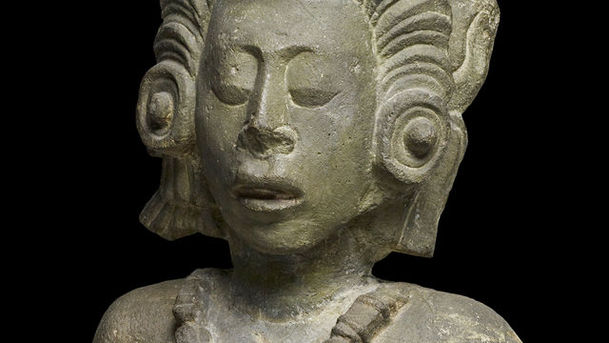A History of the World in 100 Objects Omnibus - After the Ice Age

Another chance to hear the Director of the British Museum Neil MacGregor retell the history of human development using 100 selected objects from the Museum. In this programme, he explores the profound changes that humans experienced at the end of the Ice Age. By this period, humanity is reconsidering its place in the world and turning its attention to food, power, worship and human relationships. But then, as now, one of the most important parts of human existence was finding enough food to survive. Taking a pestle from Papua New Guinea as an example, Neil asks why our ancestors decided to grow and cook new foods. The answer provides us with a telling insight into the way early humans settled on the land. Becoming farmers and eating food that was harder for other animals to digest made us a formidable force in the food chain. The impact on our environment of this shift to cookery and cultivation is still being felt. Neil is joined by Indian food writer Madhur Jaffrey, campaigner Sir Bob Geldof and archaeologist Professor Martin Jones. Neil then goes on to investigate a palm-sized stone sculpture that was found near Bethlehem. It clearly shows a couple entwined in the act of love. The contemporary sculptor Marc Quinn responds to the stone as art and the archaeologist Dr Ian Hodder considers the Natufian society that produced it. What was human life and society actually like all those years ago? Possibly a lot more sophisticated than we imagine. For his third item in the programme Neil selects four miniature clay cows made from Nile mud in Egypt 5,500 years ago, way before the time of the pyramids or the pharaohs. Why did the Egyptians start burying objects like this one with their dead? Neil goes in search life and death on the Nile and discovers how the domestication of cattle made the humble cow transform human existence. Neil then switches his focus to the world of the Mayan civilisation and a stone Maize God, discovered on the site of a major Mayan city in present day Honduras. This large statue is wearing a headdress in the shape of a giant corn cob. Maize was not only worshipped at that time but the Maya also believed that all their ancestors were descended from maize. Neil reveals why maize, which is notoriously difficult to refine for human consumption, becomes so important to the emerging agriculture of the region. Neil is joined by the anthropologist Professor John Staller and the restaurateur Santiago Calva who explain the complexity of Mayan mythological belief and the ongoing power of maize in Central America today Finally, Neil moves to Japan and the story of a 7,000-year-old clay pot which has managed to remain almost perfectly intact. Pots began in Japan around 17,000 years ago and by the time this pot was made had achieved a remarkable sophistication. The archaeologists Professor Takeshi Doi and Simon Kaner describe the significance of agriculture to the Jomon and the way in which they made their pots and used decorations from the natural world around them. This particular pot is remarkable in that it was lined with gold leaf in perhaps the 18th century and used in that quintessentially Japanese ritual, the tea ceremony. This simple clay object makes a fascinating connection between the Japan of today and the emerging world of people in Japan at the end of the Ice Age.